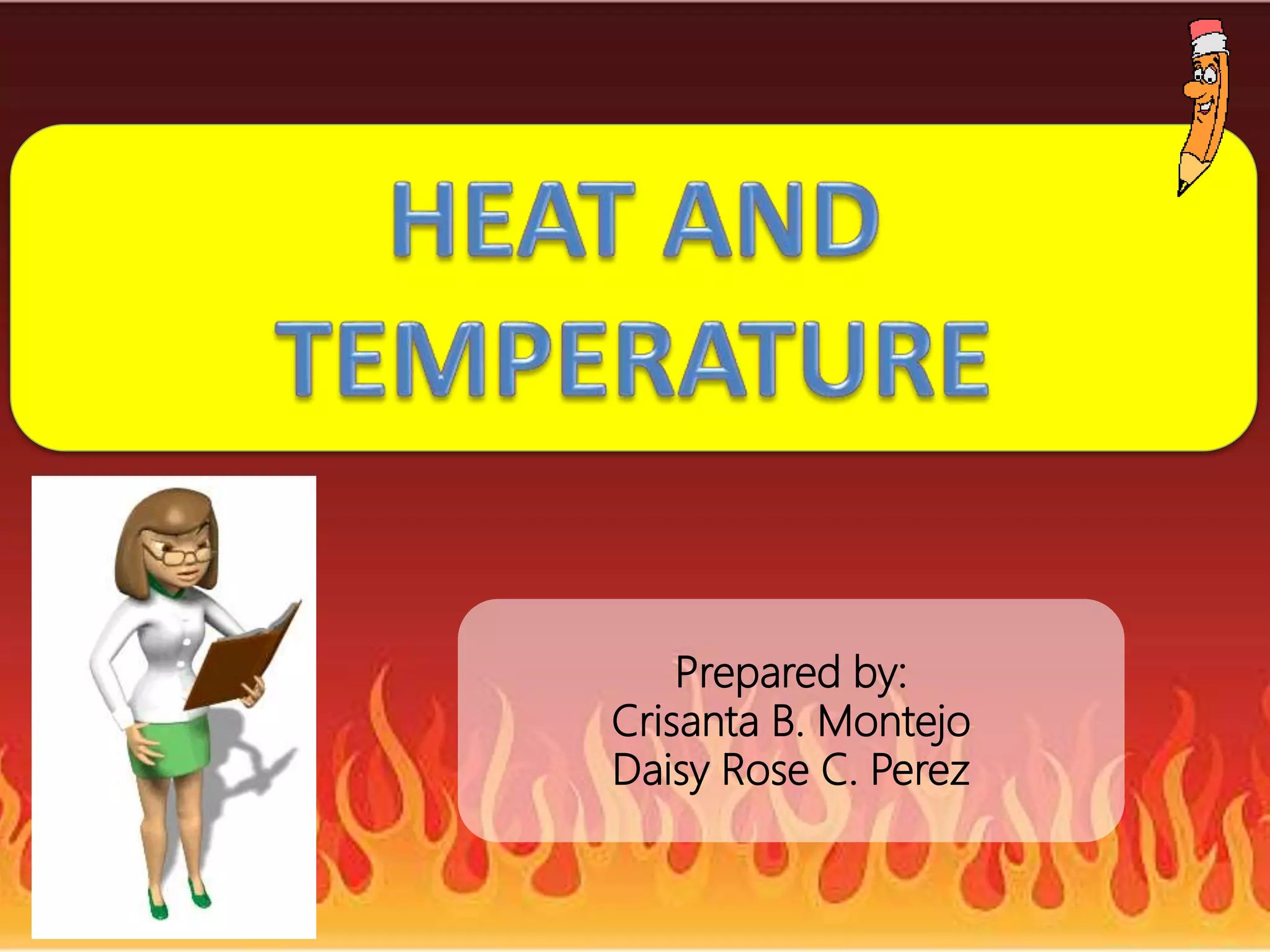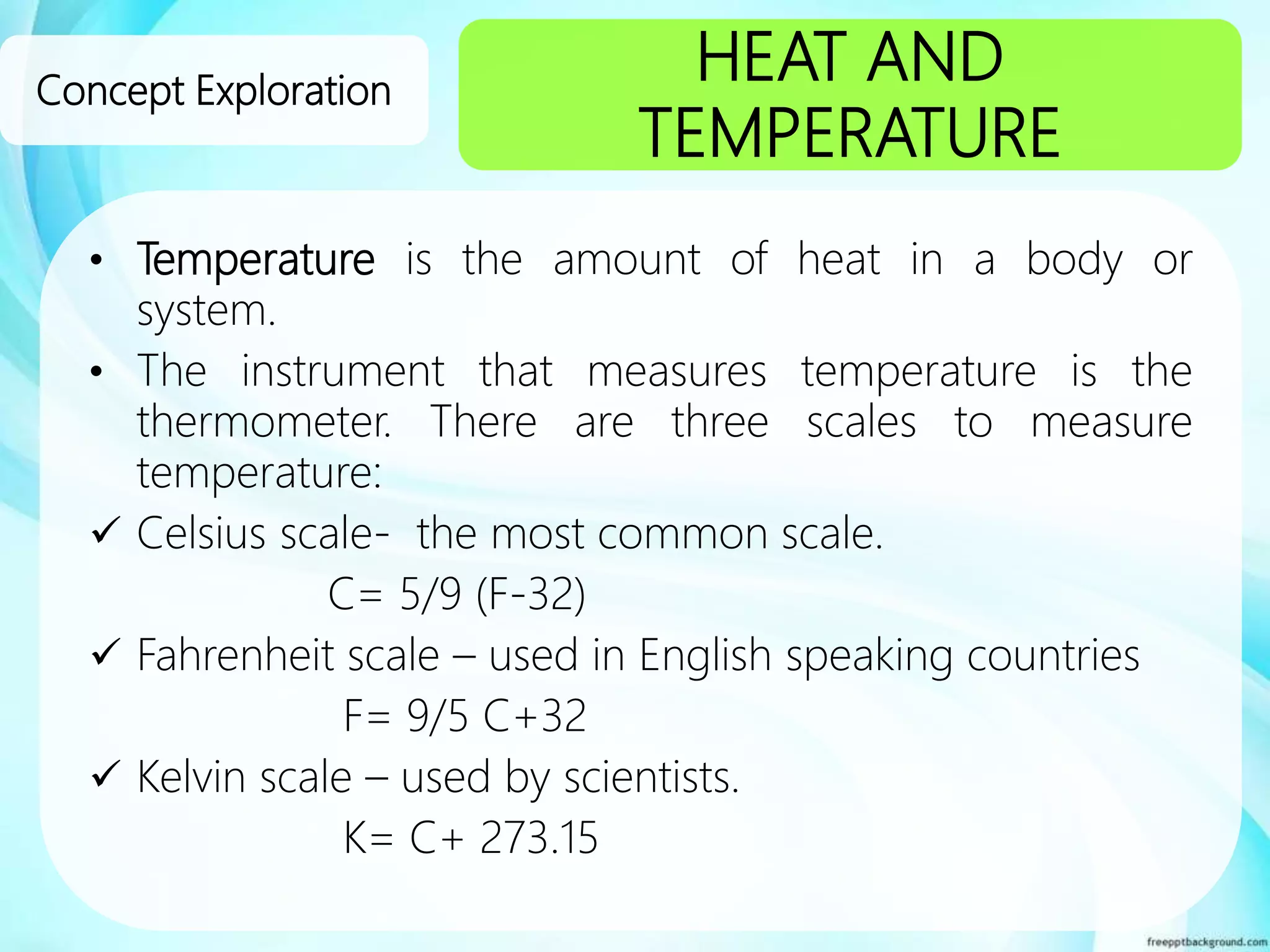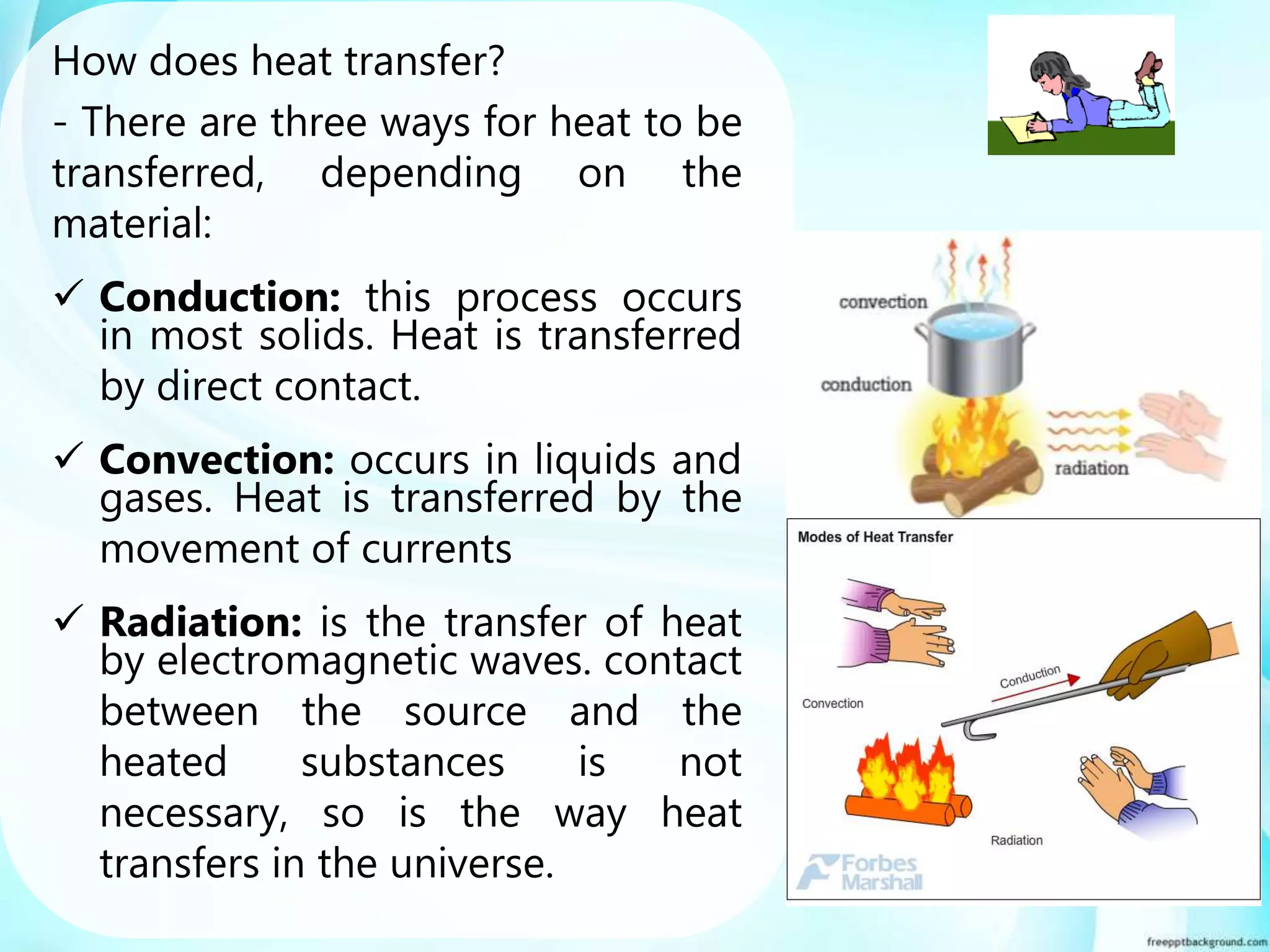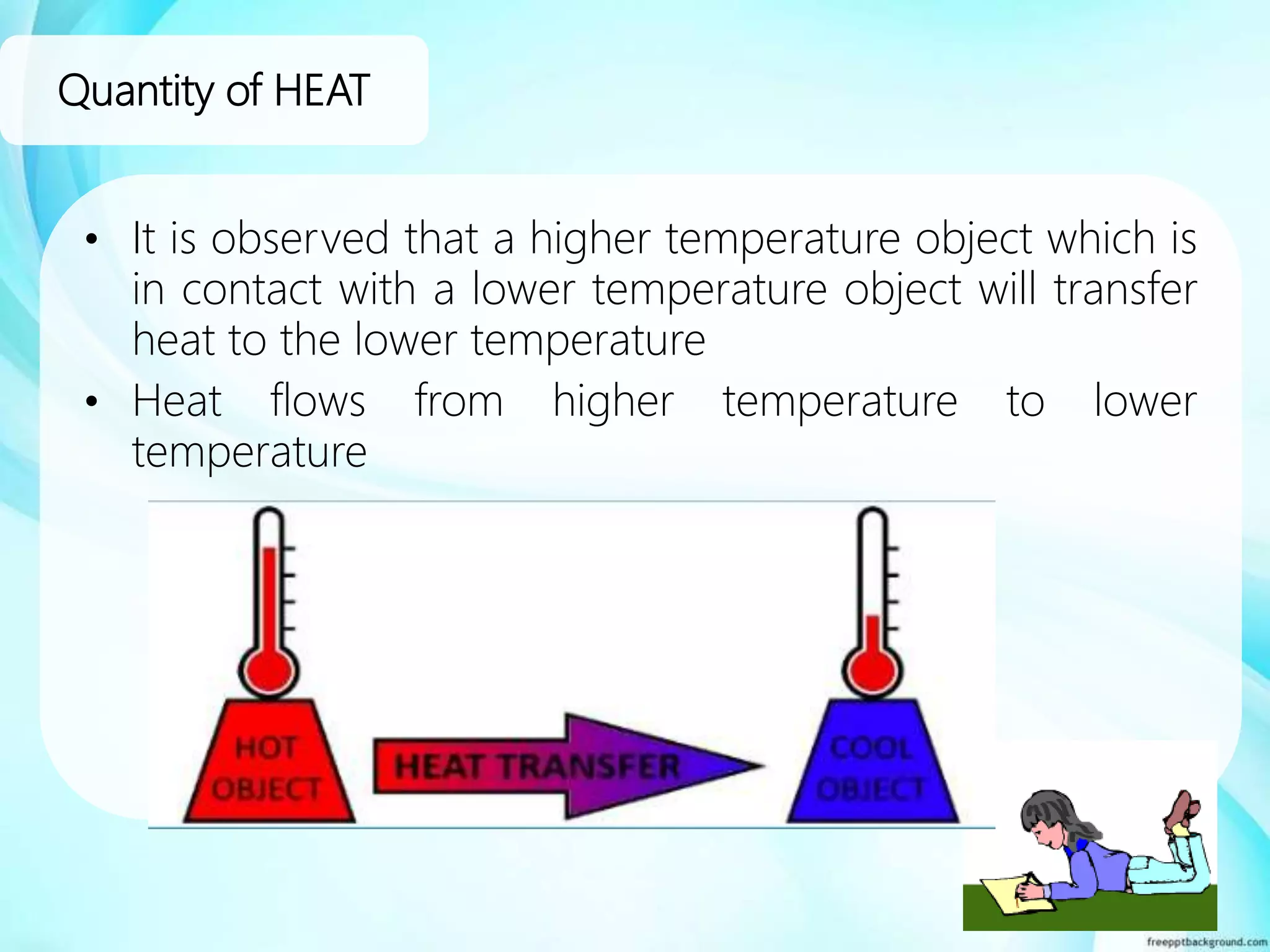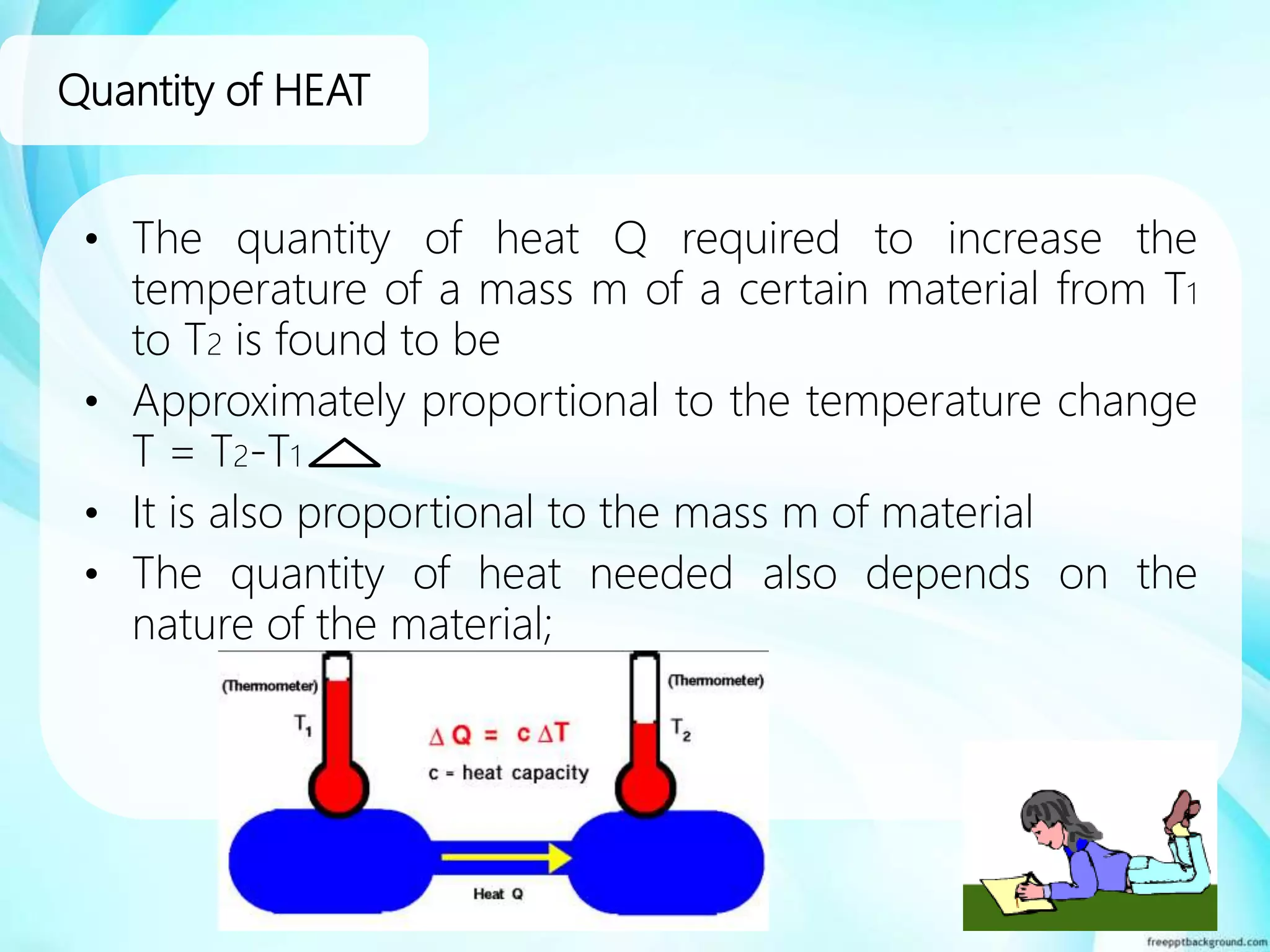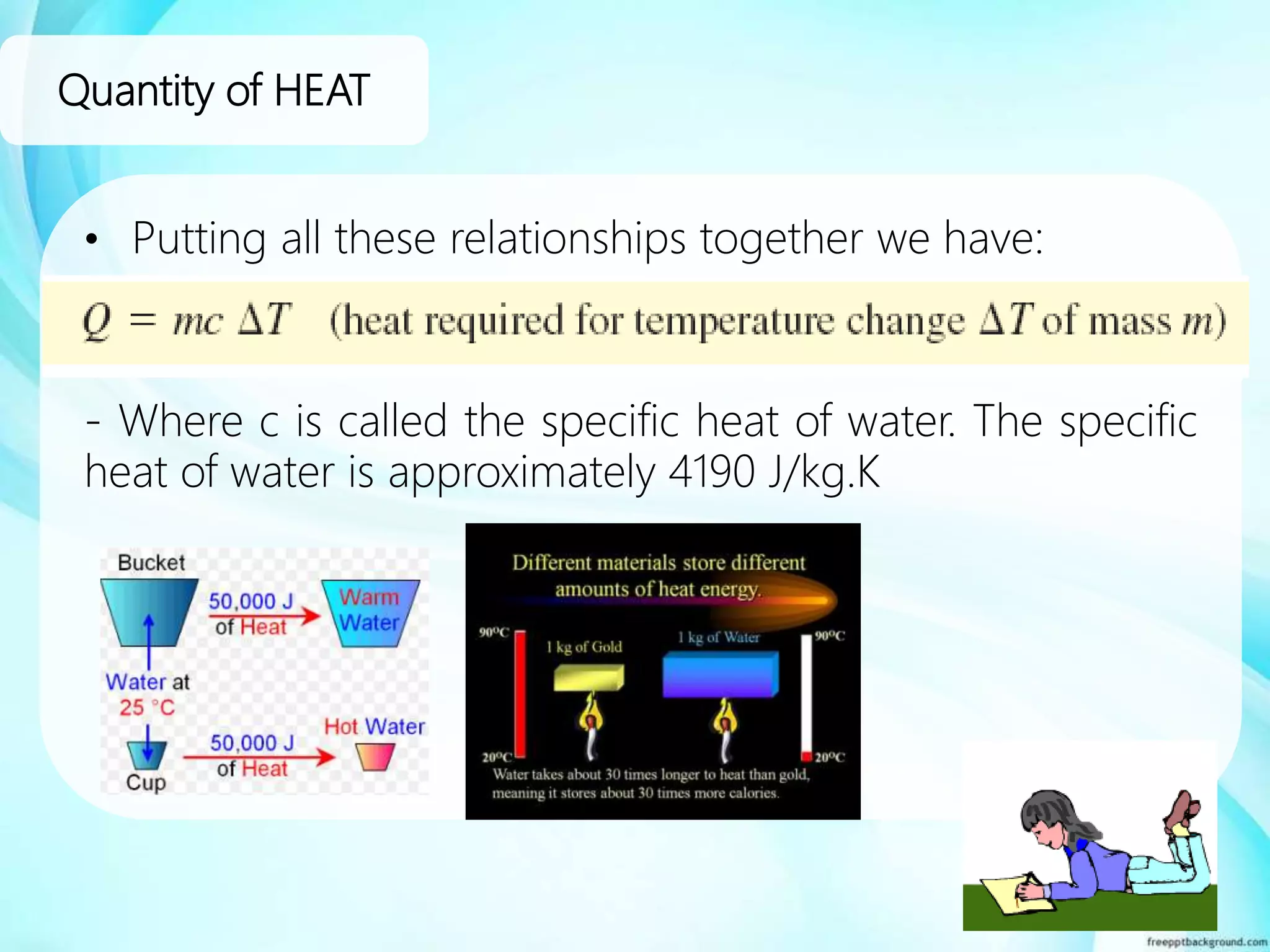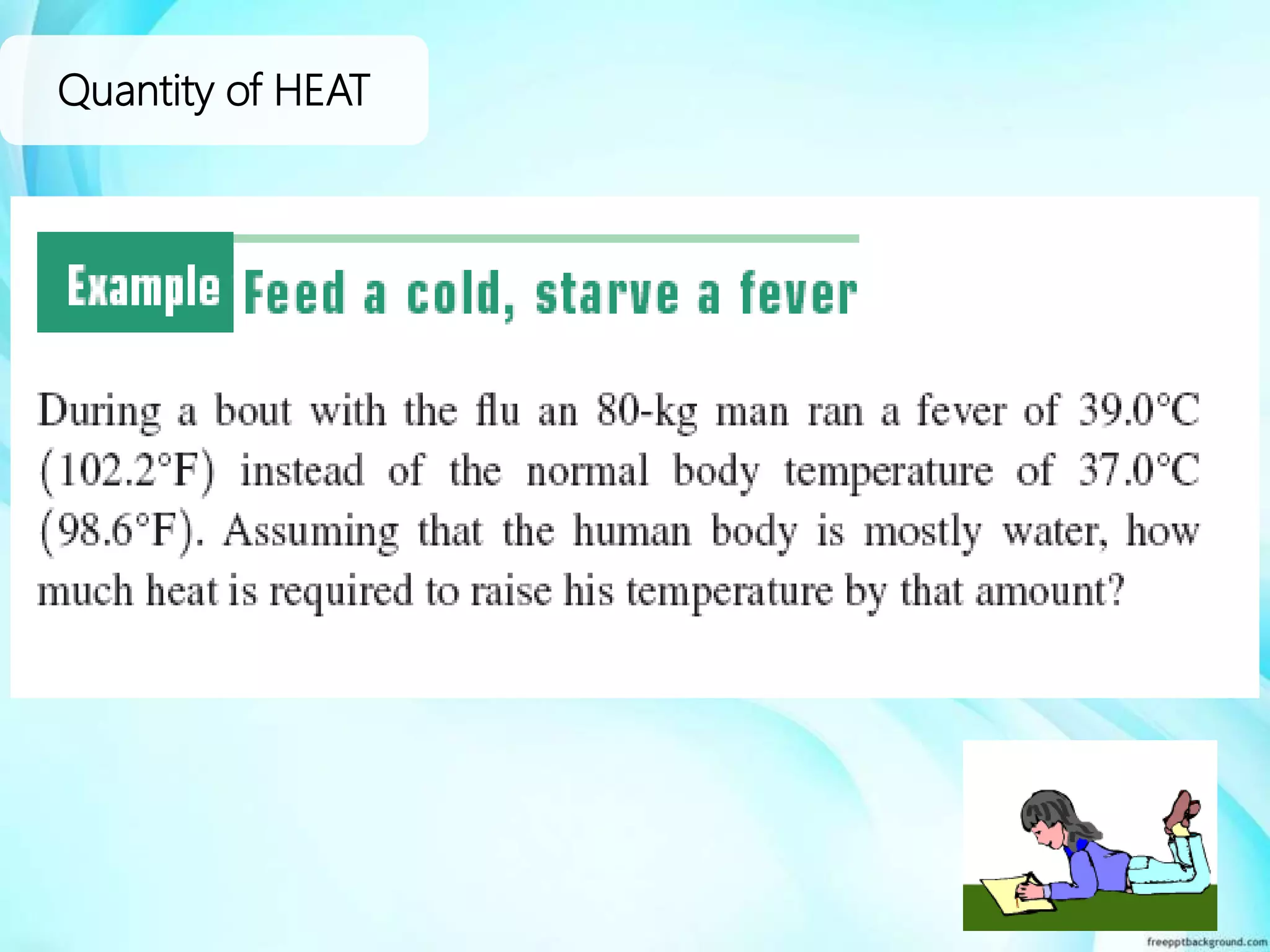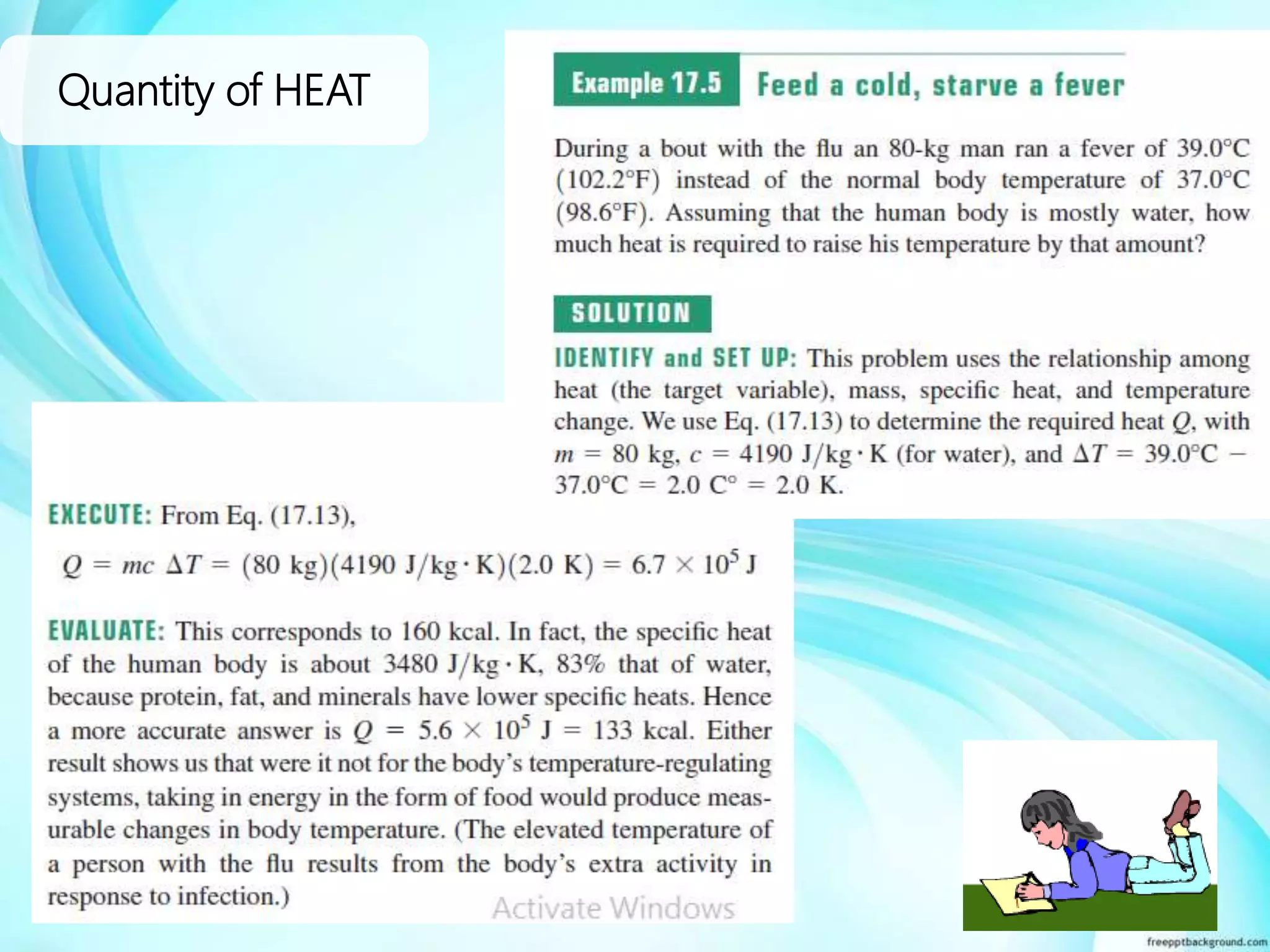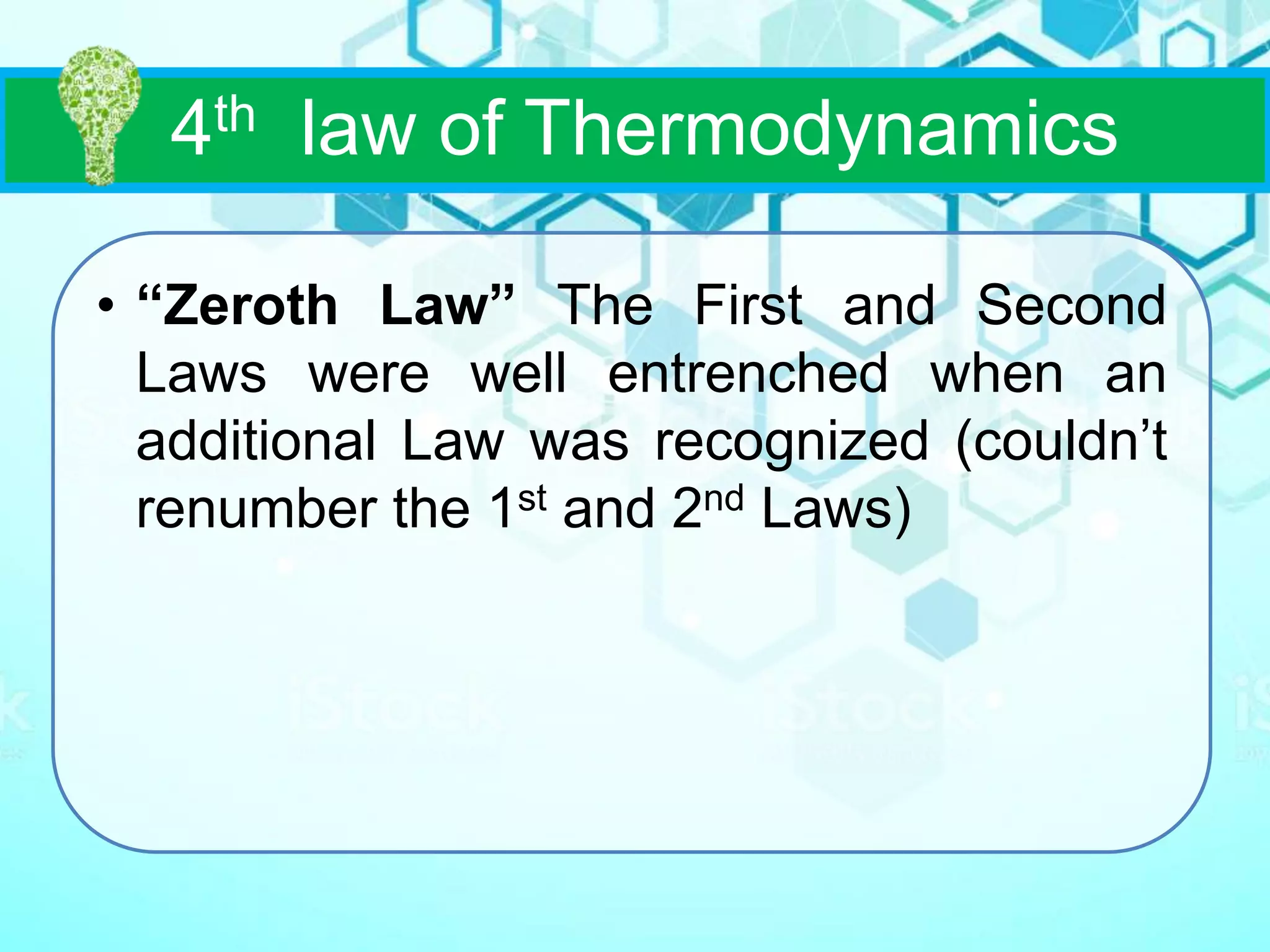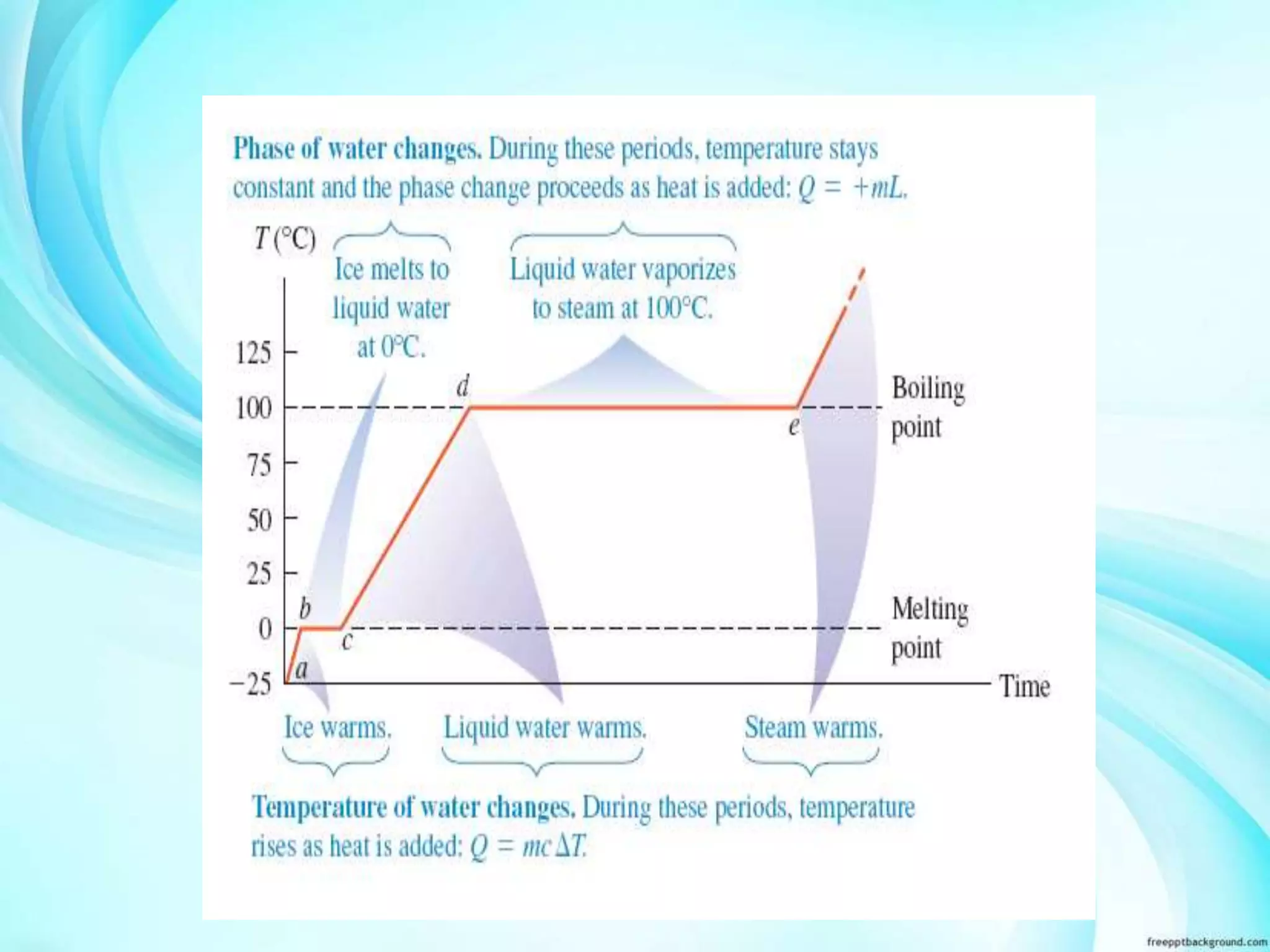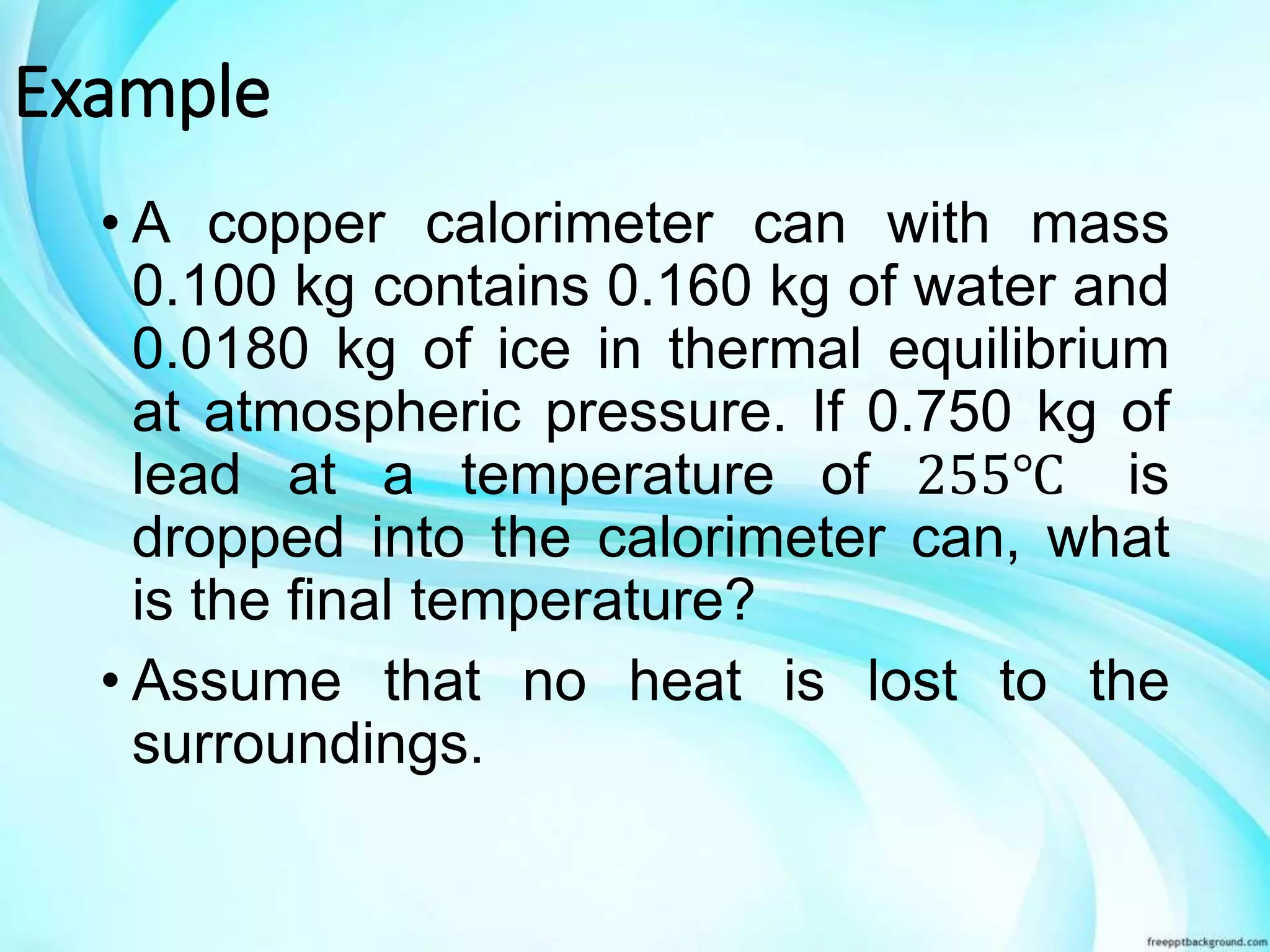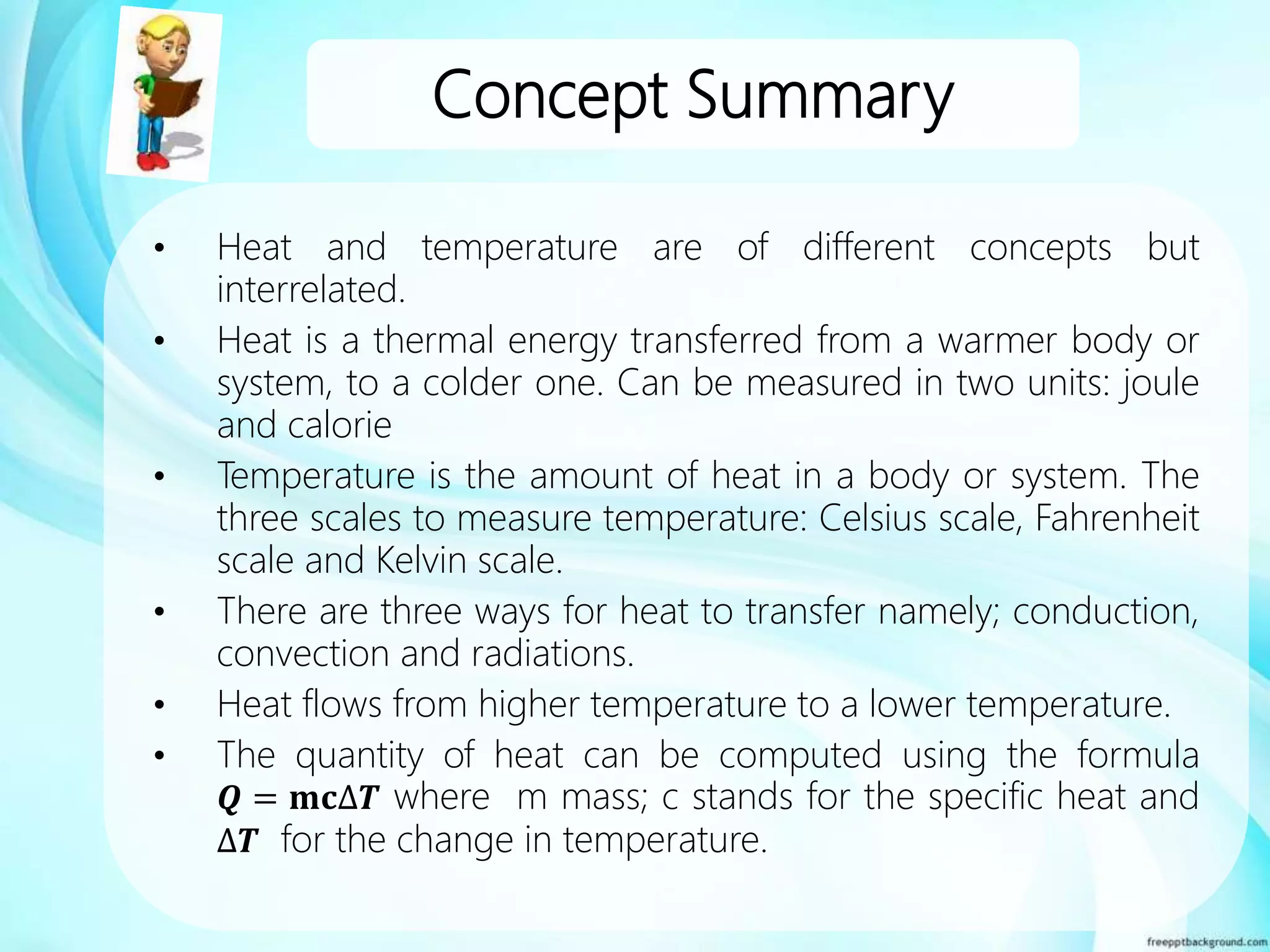This document provides an overview of key concepts related to heat and temperature. It will explain the difference and relationship between heat and temperature, discuss the Zeroth Law of Thermodynamics, and analyze how temperature changes can result in changes of phase or dimension. Methods of heat transfer like conduction, convection, and radiation will be defined. The document will also explore measuring heat through calorimetry and how heat is involved in phase changes between solid, liquid, and gas states. Self-check questions and examples are provided to reinforce understanding of fundamental concepts.
